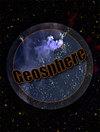巴尔的摩峡谷槽北部白垩纪层序地层学:对盆地演化和碳储量的启示
IF 1.7
3区 地球科学
Q3 GEOSCIENCES, MULTIDISCIPLINARY
引用次数: 0
摘要
我们使用>10000公里的多通道地震剖面,结合29口近海油井的地球物理测井、生物地层学和岩性,评估了巴尔的摩峡谷槽北部(NBCT)的白垩纪地层和碳汇潜力。我们识别并绘制了六个主要在阶段级别解决的序列。尽管层序边界与区域和全球海平面变化相关,但可容纳性主要由热沉降和非热沉降控制,火成岩侵入、活动断层以及沉积物供应和来源的变化也改变了记录。我们的地层图显示了一个主要的南部(阿巴拉契亚中部)早白垩世来源,该来源在阿普第阶和阿尔比阶向北迁移。在Cenomanian时期,NBCT的沉积速率增加,沉积中心向北和向陆地移动。研究表明,沉积分为三个阶段:(1)早白垩世古环境主要为陆生环境,表现为振幅可变、地震相混乱、锯齿状伽马测井以及具有陆生微体化石的异石器时代砂岩和泥岩;(2) 阿尔比阶至塞诺曼阶以三角洲古环境为主,以块状、漏斗状、伽马射线测井和斜坡为特征,其特征是具有明确终端的连续高振幅地震反射;和(3)根据泥岩倾向的岩性、测井中的伽马射线峰值和有孔虫证据推断,Cenomanian和更年轻的是海相陆架。与海洋缺氧事件2相关的Cenomanian/Turonian边界的长期海侵和最大水深之后是回归和相对海平面下降。我们表明,阿普第阶至塞诺曼阶三个高位体系域的多孔和可渗透砂岩是超临界CO2储存的大容量储层,受上覆深水泥岩的限制。本文章由计算机程序翻译,如有差异,请以英文原文为准。
Cretaceous sequence stratigraphy of the northern Baltimore Canyon Trough: Implications for basin evolution and carbon storage
We evaluate the Cretaceous stratigraphy and carbon sequestration potential of the northern Baltimore Canyon Trough (NBCT) using >10,000 km of multi-channel seismic profiles integrated with geophysical logs, biostratigraphy, and lithology from 29 offshore wells. We identify and map six sequences resolved primarily at the stage level. Accommodation was dominated by thermal and non-thermal subsidence, though sequence boundaries correlate with regional and global sea-level changes, and the record is modified by igneous intrusion, active faulting, and changes in sediment supply and sources. Our stratigraphic maps illustrate a primary southern (central Appalachian) Early Cretaceous source that migrated northward during the Aptian and Albian. During the Cenomanian, sedimentation rates in the NBCT increased and depocenters shifted northward and landward. We show that deposition occurred in three phases: (1) earlier Cretaceous paleoenvironments were primarily terrestrial indicated by variable amplitude, chaotic seismic facies, serrated gamma logs, and heterolithic sandstones and mudstones with terrestrial microfossils; (2) the Albian to Cenomanian was dominated by deltaic paleoenvironments indicated by blocky, funnel-shaped, gamma-ray logs and clinoforms characterized by continuous high-amplitude seismic reflections with well-defined terminations; and (3) the Cenomanian and younger was marine shelf, inferred from mudstone-prone lithologies, peak gamma-ray values in well logs, and foraminiferal evidence. Long-term transgression and maximum water depths at the Cenomanian/Turonian boundary correlative with Ocean Anoxic Event 2 were followed by a regression and relative sea-level fall. We show that porous and permeable sandstones of three Aptian to Cenomanian highstand systems tracts are high-volume reservoirs for supercritical CO2 storage that are confined by overlying deep water mudstones.
求助全文
通过发布文献求助,成功后即可免费获取论文全文。
去求助
来源期刊

Geosphere
地学-地球科学综合
CiteScore
4.40
自引率
12.00%
发文量
71
审稿时长
6-12 weeks
期刊介绍:
Geosphere is GSA''s ambitious, online-only publication that addresses the growing need for timely publication of research results, data, software, and educational developments in ways that cannot be addressed by traditional formats. The journal''s rigorously peer-reviewed, high-quality research papers target an international audience in all geoscience fields. Its innovative format encourages extensive use of color, animations, interactivity, and oversize figures (maps, cross sections, etc.), and provides easy access to resources such as GIS databases, data archives, and modeling results. Geosphere''s broad scope and variety of contributions is a refreshing addition to traditional journals.
 求助内容:
求助内容: 应助结果提醒方式:
应助结果提醒方式:


